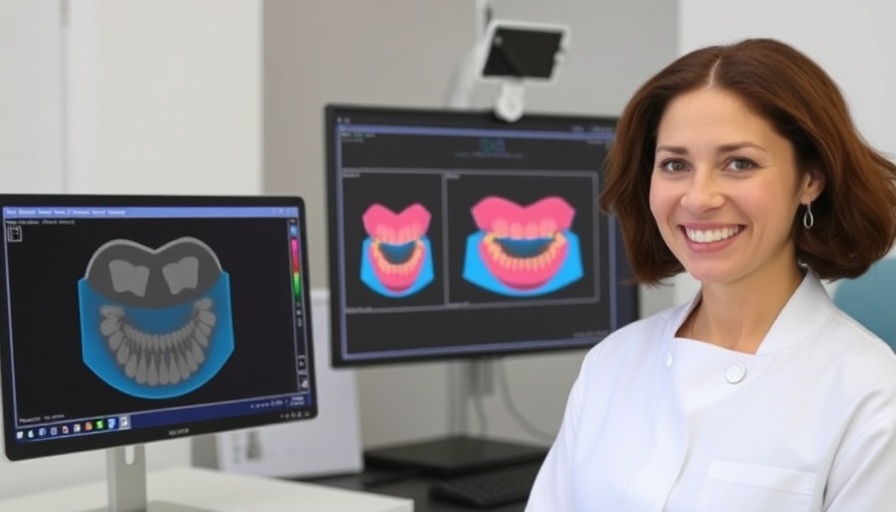
Breaking New Ground in Dental Technology
The recent partnership between Pearl and Medit marks a significant advancement in dental diagnostics and intraoral scanning technology. With Pearl's AI diagnostic capabilities being integrated into Medit’s software, dental professionals are set to enhance their diagnostic accuracy and patient interactions tremendously. This collaboration not only streamlines workflows but also promises to lead to better clinical outcomes for patients, representing a pivotal shift in the dental field.
Revolutionizing Patient Experience with AI
The integration is much more than a technical upgrade; it represents a transformation in the way dentists might approach patient care. By utilizing AI-supported diagnostics, dentists can provide a more finely tuned diagnostic procedure, potentially identifying issues earlier and rendering treatment plans that are more effective. Patients can expect a more engaged and informed experience, resulting from this technological leap.
Historical Context of AI in Dentistry
The evolution of dental technology has been rapid over the last decade, and the incorporation of AI is the latest chapter. Initially, intraoral scanning was mostly limited to capturing images for reference. However, with AI growing more sophisticated, tools like Pearl's diagnostic solutions are reshaping how conditions are diagnosed and treated. Understanding this history helps clinicians appreciate the transformative journey that has led to this breakthrough.
Future Predictions: The Potential of AI-Driven Diagnostics
Looking ahead, the continuous improvement and investment in AI within dental technology could redefine standards of practice in oral health. Future updates may include more comprehensive patient databases for enhanced diagnostics, tele-dentistry capabilities, and even personalized care plans driven by AI analytics. This opens up exciting possibilities for not only better patient outcomes but also for the dental industry to adapt rapidly to a tech-savvy clientele.
The Global Relevance of Dental AI Solutions
As this partnership unfolds, it underlines a broader trend within the healthcare sector—embracing innovation through technology. The ripple effect has the potential to influence global markets in dental products and services, driving competition and fostering new innovations. Countries that adapt quickly to these advancements will be at the forefront of providing quality dental care, impacting healthcare economics worldwide.
Practical Insights: How Patients Can Benefit
For patients, the implications of this partnership mean more than just better technology; it represents an opportunity for increased transparency and understanding of dental health. For instance, patients will likely have access to clearer explanations of diagnoses and treatment options, aided by advanced imaging technologies paired with AI-enhanced understanding. Dentists can expect to see a shift in patient expectations regarding involvement in their dental care processes, promoting a more shared decision-making environment.
The Emotional Value of Advanced Dental Care
The anxiety surrounding dental visits can be alleviated through the adoption of these new technologies. By providing clearer diagnostics and involving patients in their care process, the partnership between Pearl and Medit can help foster trust in dental professionals, making visits less daunting and more about collaboration. Emphasizing a community-focused approach could lead to better health for both individuals and society.
Next Steps for Dentists and Patients
As the integration rolls out, it’s essential for dental practices to educate their staff and patients about the new technology and its benefits. Open discussions can help diminish apprehension and increase adoption. For patients, being proactive about their dental health and understanding these advancements can empower them to take charge of their oral care. The future of dentistry has arrived, and it comes with the promise of precision, engagement, and improvement in patient outcomes.
 Add Row
Add Row  Add
Add 



Write A Comment